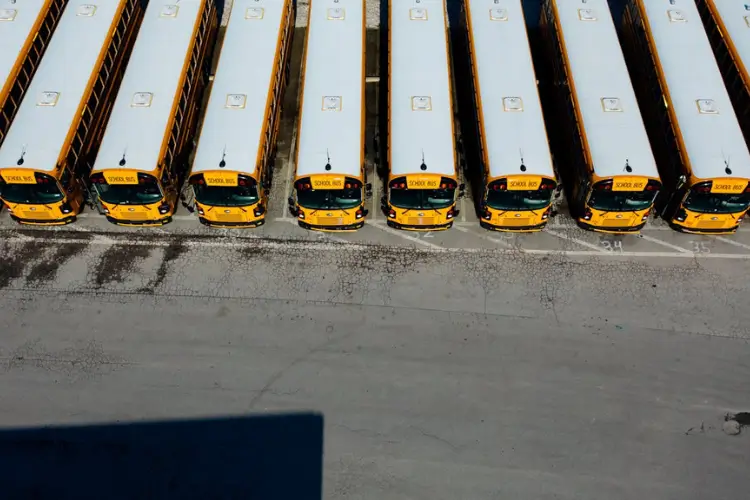Although they generally operate with limited resources, school transportation systems must meet growing needs. Along with saving schools’ money, effective bus operations improve student services, lower environmental impact, and increase safety. Your school may maximize its transportation system using the correct strategy without compromising dependability or quality.
Implement Route Optimization Software
Route optimization is among the most effective approaches to raising bus efficiency. While preserving or raising service standards, modern routing systems can greatly save mileage, fuel consumption, and driver hours. To create the most efficient routes, programs for route optimization look at several factors, like student addresses, school locations, traffic patterns, and road conditions. These solutions can guarantee students aren’t on buses for too long and help to cut the demand for buses by up to 20%. Certain sophisticated systems even incorporate real-time GPS tracking, which lets you make swift changes following an event. The American School Bus Council claims that well-chosen paths can cut annual transportation expenses by 10–15%. When choosing route optimization tools, search for ones that interface easily with transportation personnel and link with your current student information systems. Usually, the initial investment covers itself in one to two years by means of reduced operational expenses.
Establish Preventive Maintenance Programs
Safety as well as efficiency depend on consistent preventative maintenance. Buses undergoing planned maintenance have a longer service life, consume less fuel, and incur fewer breakdowns. Develop a thorough maintenance plan covering daily pre-trip inspections by drivers, frequent fluid checks and replacements, methodical brake inspections, tire pressure and tread monitoring, engine diagnostics and tune-ups, and gearbox servicing. Well-kept buses can achieve 8–12% greater fuel economy than poorly maintained vehicles, according to the Transportation Research Board. Preventive maintenance also allows one to spot minor faults before they become severe ones needing expensive repairs or bus replacements. Many districts look for school buses for sale that provide better fuel economy and lower maintenance needs when maintenance expenses start to exceed the advantages of over-aged vehicles. By automatically planning repair intervals and keeping thorough service records for every vehicle in your fleet, a digital maintenance monitoring system may help to improve efficiency even further.
Train Drivers in Fuel-Efficient Driving Techniques
Fuel usage and vehicle wear are strongly influenced by driver behavior. By emphasizing fuel-efficient driving methods in a thorough driver training program, gasoline expenditures can be lowered by 5–10%. Important skills to teach include smooth acceleration and deceleration, low idle time, ideal speed maintenance, good gear selection (for manual transmissions), anticipatory driving to prevent abrupt stops, and, where feasible, limited usage of air conditioning. Think about starting a driver appreciation program whereby operators who regularly show good driving techniques get prizes. This generates good incentives and helps the transportation department to foster an efficient culture all around. The specialized training courses provided by the National Association for Pupil Transportation are quite valuable tools for enhancing driver efficiency training at your institution. As transportation technology develops, quarterly refresher courses should be planned to reinforce these skills and provide fresh efficiency measures.
Adopt Alternative Fuel Options and New Technologies
Investigating other fuels can drastically save running expenses as well as environmental effects. There are several rather good choices for school transportation: With the Propane Education & Research Council finding maintenance cost savings of up to 50%, propane Autogas buses usually cost less to run than diesel buses. Though long-term savings usually offset initial purchase expenses, they still are greater. With zero tailpipe emissions and much-reduced energy costs, electric buses provide an even another interesting choice. While initial expenses are still high, several subsidies and incentives can assist in balancing these expenses; long-term savings can be really large. Beyond alternative fuels, consider technologies including aerodynamic improvements for optimal fuel economy, sophisticated temperature controls maximizing heating and cooling, telematics tracking of driver behavior and vehicle performance, and automated stop-start systems cutting idle.
Conclusion
Increasing the efficiency of school buses calls for a multifarious strategy combining technical solutions with human elements like driver training and maintenance techniques. Schools may drastically cut transportation expenses while keeping or enhancing service quality by using route optimization software, creating strict maintenance routines, teaching drivers’ effective procedures, and investigating alternate fuel choices. These improvements benefit the school budget as well as the surroundings and the community at a general level.




